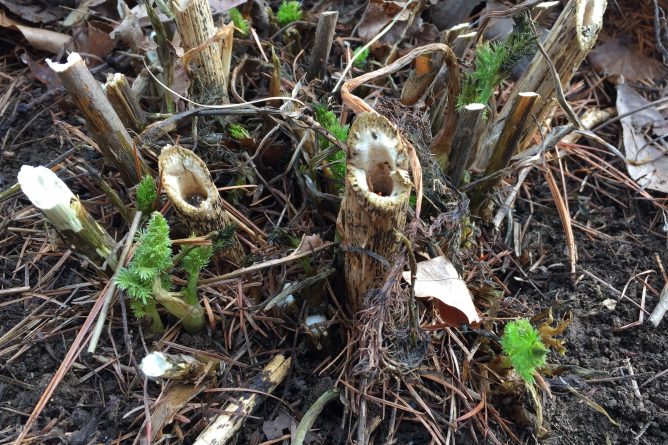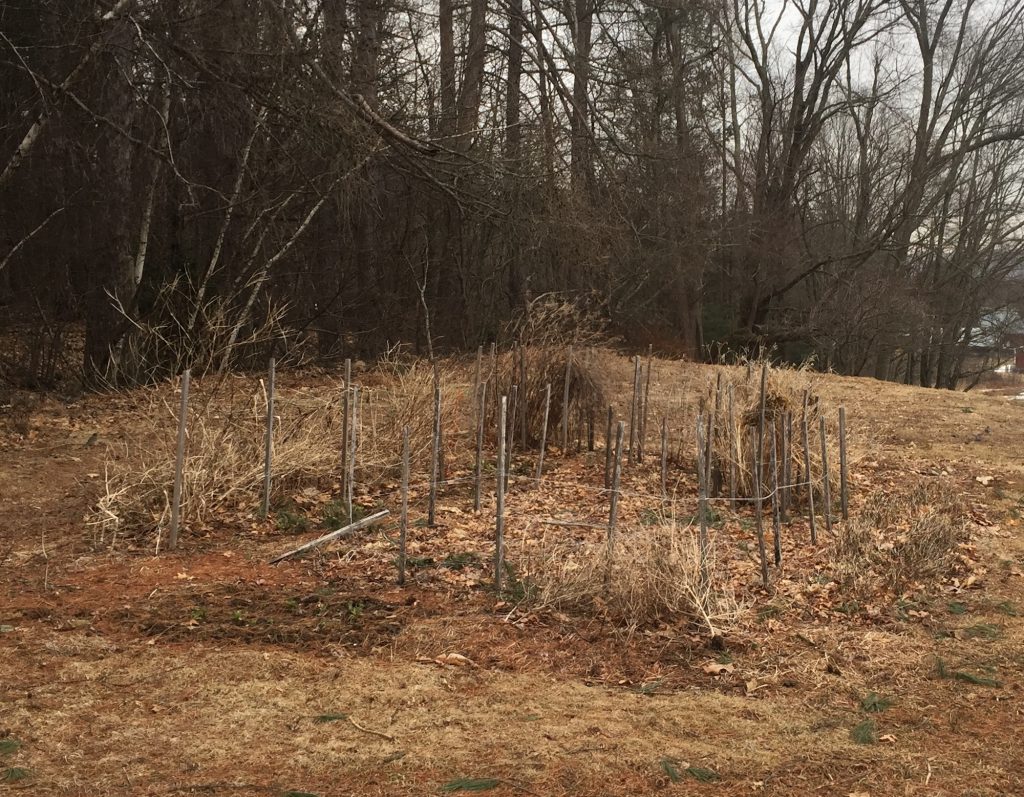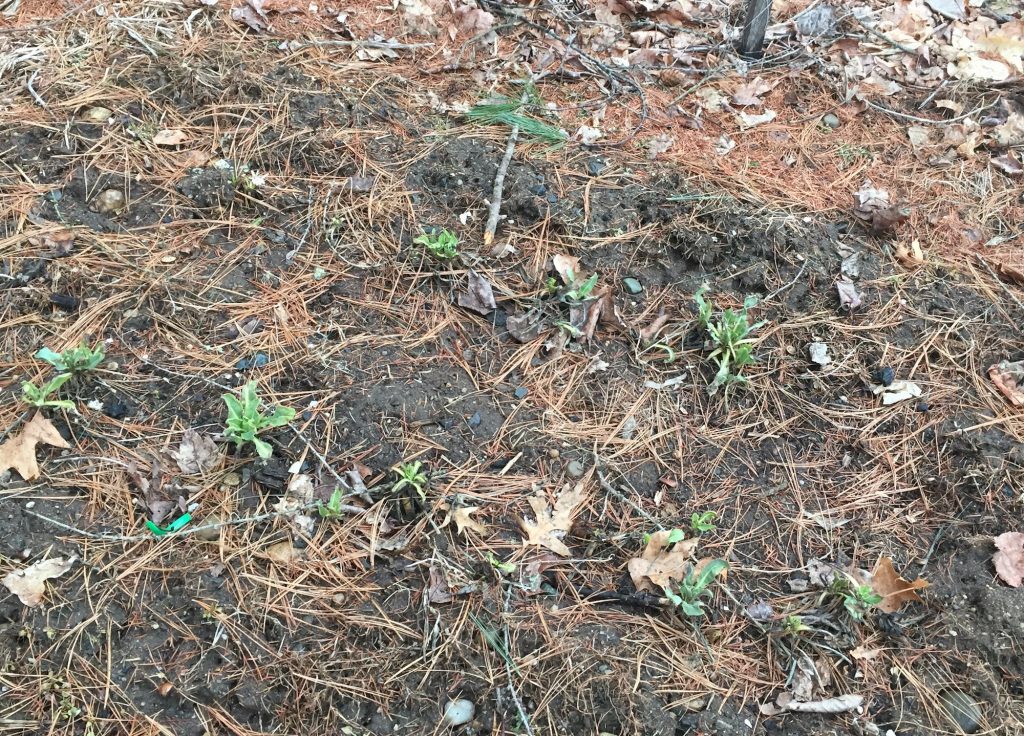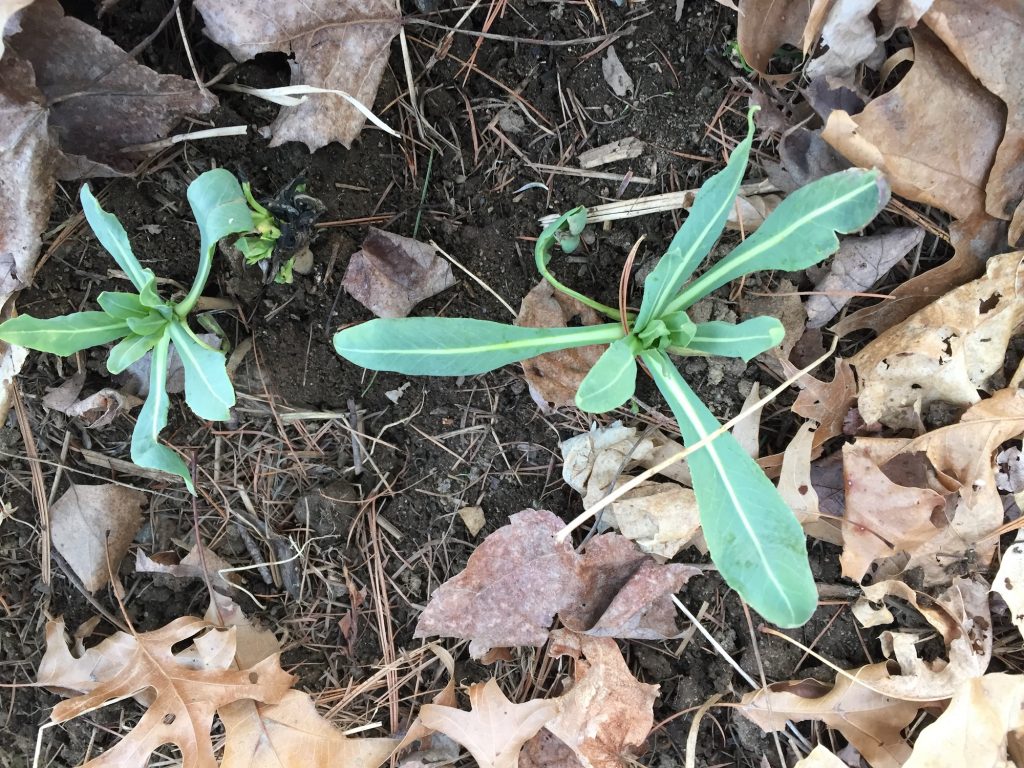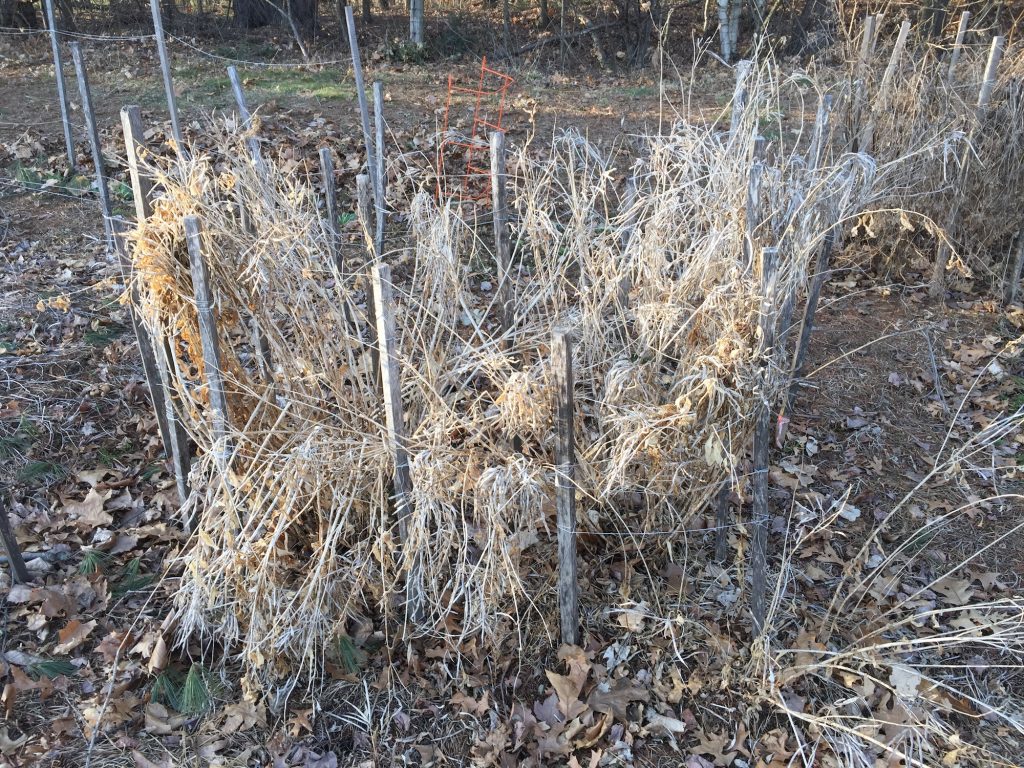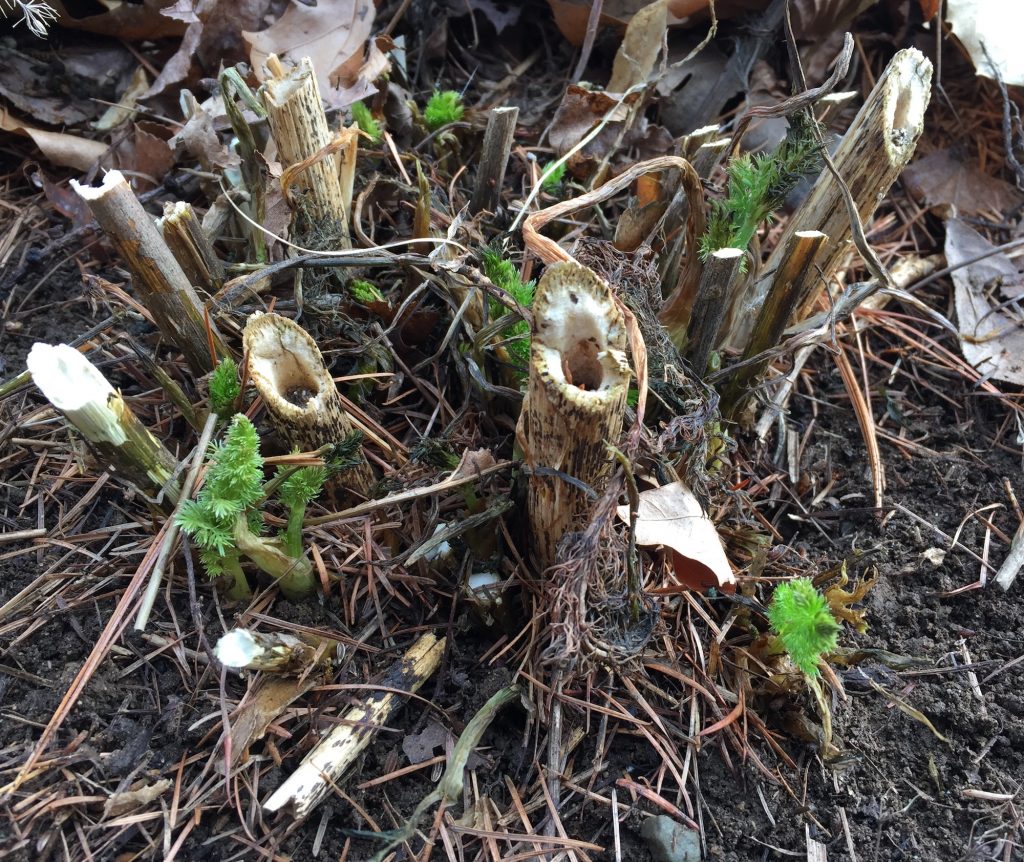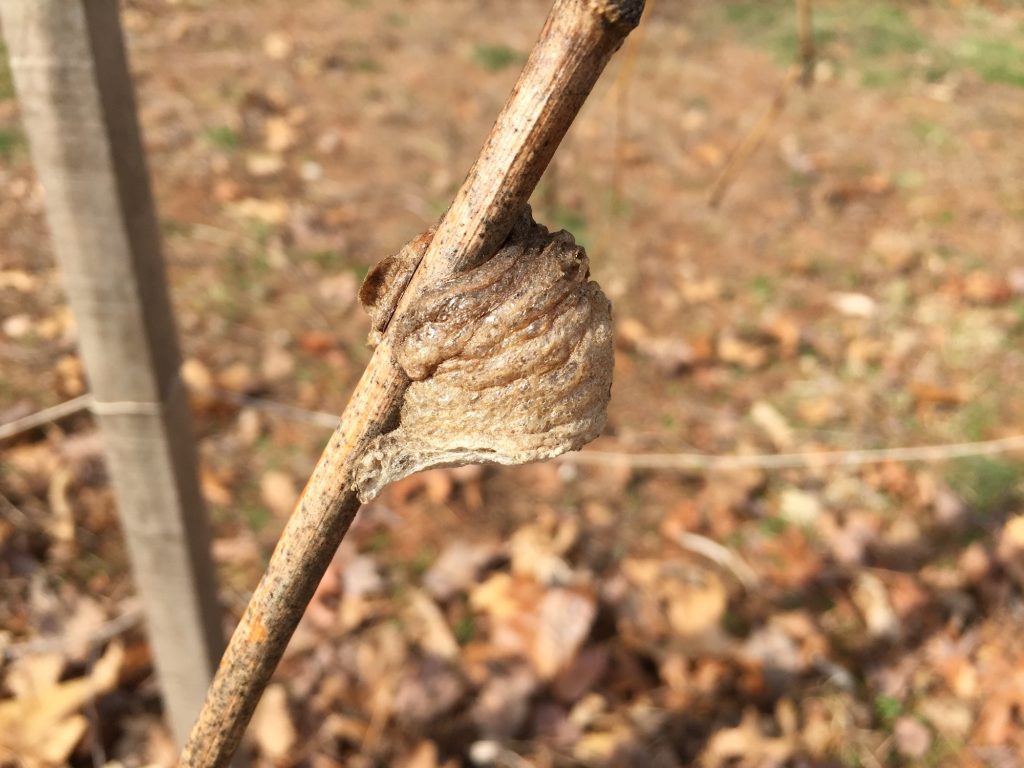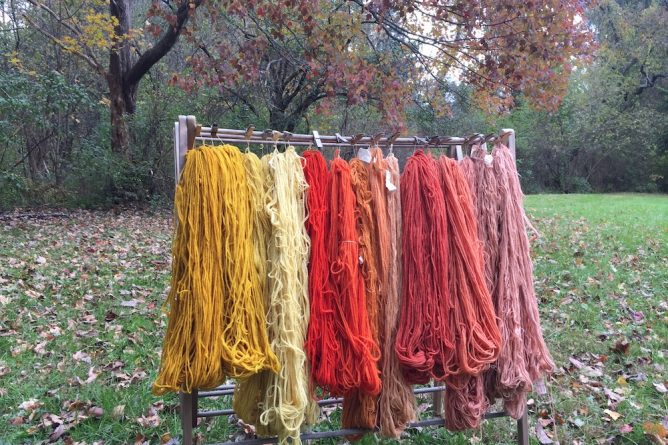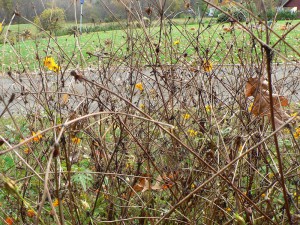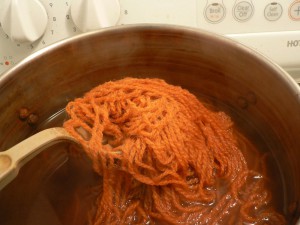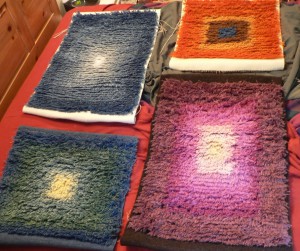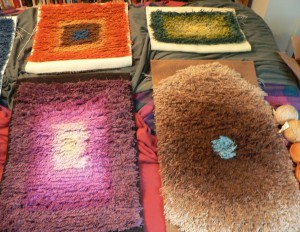On March 15th I did a little spring cleaning in my school’s dye plant garden at Bramble Hill Farm. Here is the “before” picture:
That morning I pulled up the dead marigolds (bed furthest to right) and orange cosmos (bed furthest to the left).
The woad was up, but something had been nibbling it. I suspect rabbits, but I can’t be sure.
I checked back on things on March 27th. I noticed that one of the woad beds was faring a little better than the other (longer leaves) but was still suffering from some chomping:
Here was the bedraggled stand of amsonia on March 27th:
I didn’t get back over there until March 30th. I cut down the amsonia, which I grow because it is a bast fiber plant. Some years I cut it down earlier in the fall or winter, but this fall I obviously didn’t get around to it. Yay, the Amsonia fit in the back of the car. Barely!
I also cut down the dead bronze fennel, which was not worth saving at that point. Once I cut away the dead stalks and cleared away the fallen leaves, I was excited to see that there was already new growth!
If you bought some of the bronze fennel plants at my plant sale last summer at Sheep and Shawl, check to see if they’re up!
One of the things I love about gardening and dyeing with plants is the way that it requires me to look closely and be attentive. Close up, you can clearly see the new growth. It is eye-poppingly bright and practically shouting its presence. You can also see the architectural ruins of the old stalks, some darker blotches on the fresh fronds, which I think must be frost damage, and so many other intriguing details. At every stage of its growth, the fronds of the bronze fennel are just so soft and feathery.
However, from the view point five feet off the ground, there’s nothing that would catch the eye or demand that you stoop to look more closely:
On that last remaining stalk in the bronze fennel bed, I found an egg case. I think it’s another praying mantis egg case (ootheca!) so I didn’t cut it. Here’s the close up:
Welcome, spring!

